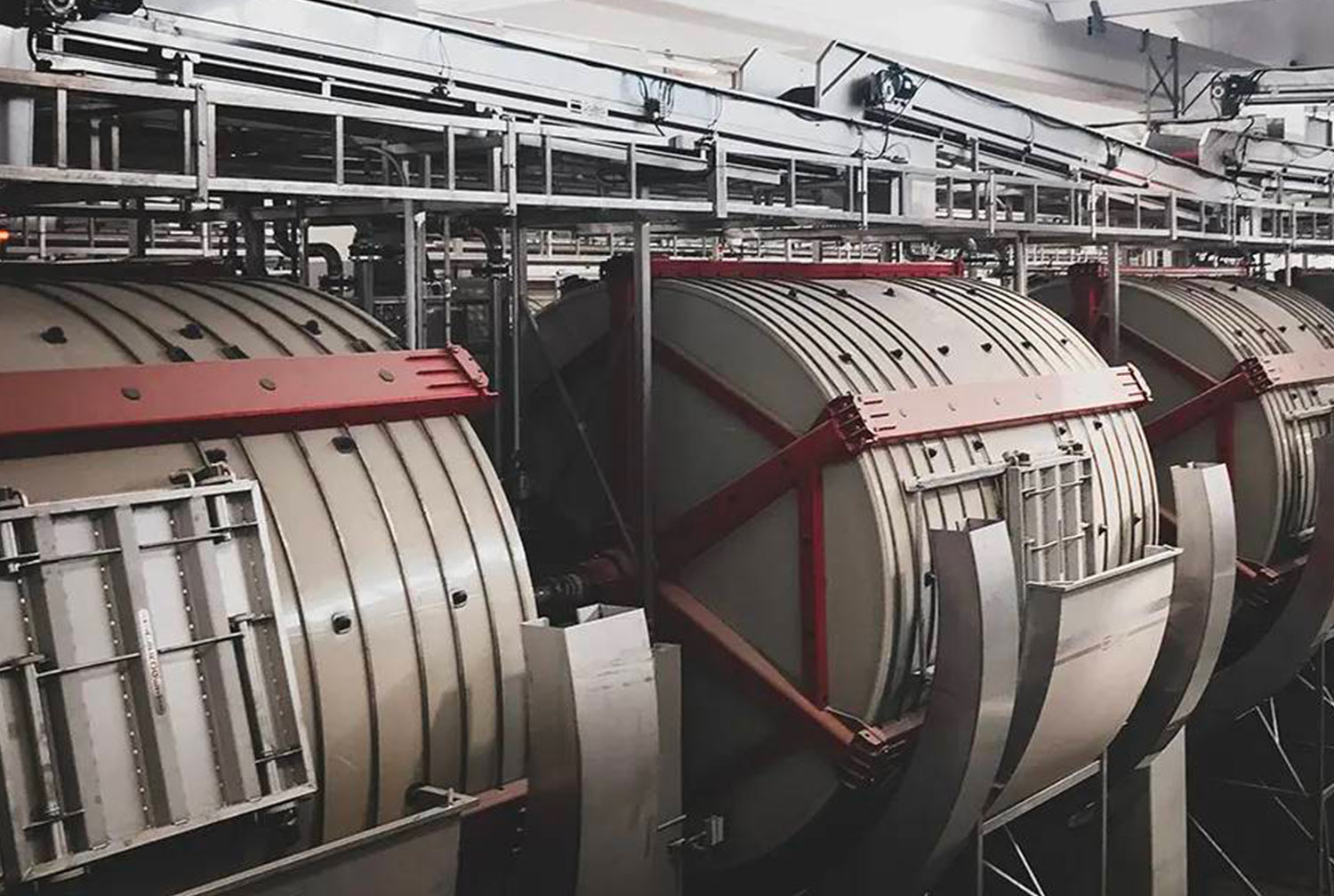
EXPRESS
conveyor belt loading drums line
Drums loading lines by Feltre allows to transport any type of hides in the various stages of the tanning process with maximum efficiency and traceability. From the raw warehouse to the liming / soaking drums, or from the fleshing / splitting to the tanning drums, these are just some of the examples of use.
Reduction of times, greater simplicity of the operations, increased safety and traceability combined with a significant reduction in handling and people costs, are some of the advantages of a Feltre system.
All systems are tailor designed and realized, respecting the specific requests of the customer and its process flow. Contact us for your dedicated project.
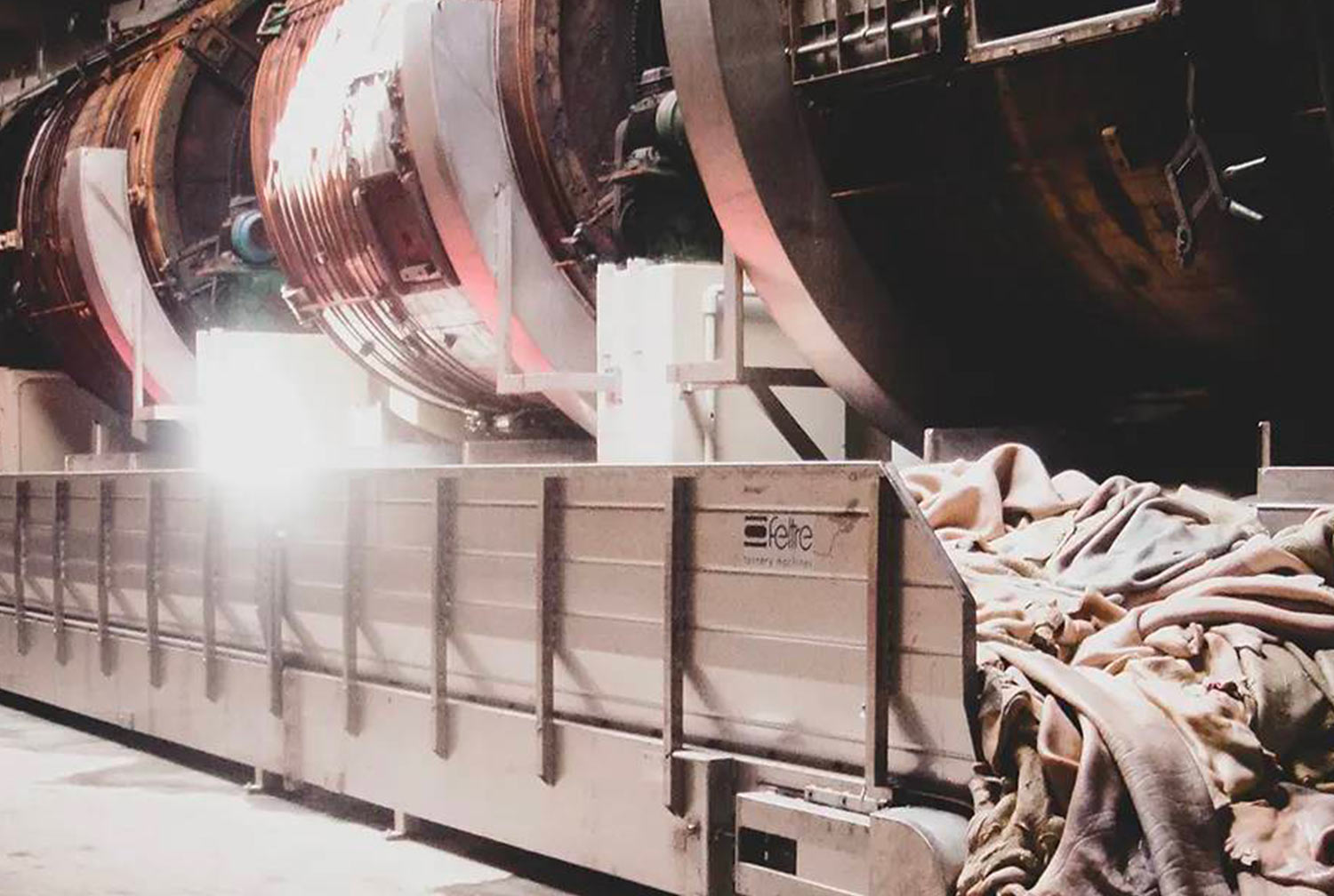
SUPERBELT
conveyor belt loading drums line
Drums unloading lines by Feltre allows to collect and transport any type of hides in the various stages of the tanning process. From the lime / soaking drums moving the hides to the fleshing machine, or from the tanning drums moving the hides to the sammying machine.
The unloading line is also used in the retanning and finishing department, and in all cases where an increase in safety is required together with greater simplicity in operations as well as a significant reduction in handling costs.
All systems are tailor designed and realized, respecting the specific requests of the customer and its process flow. Contact us for your dedicated project.
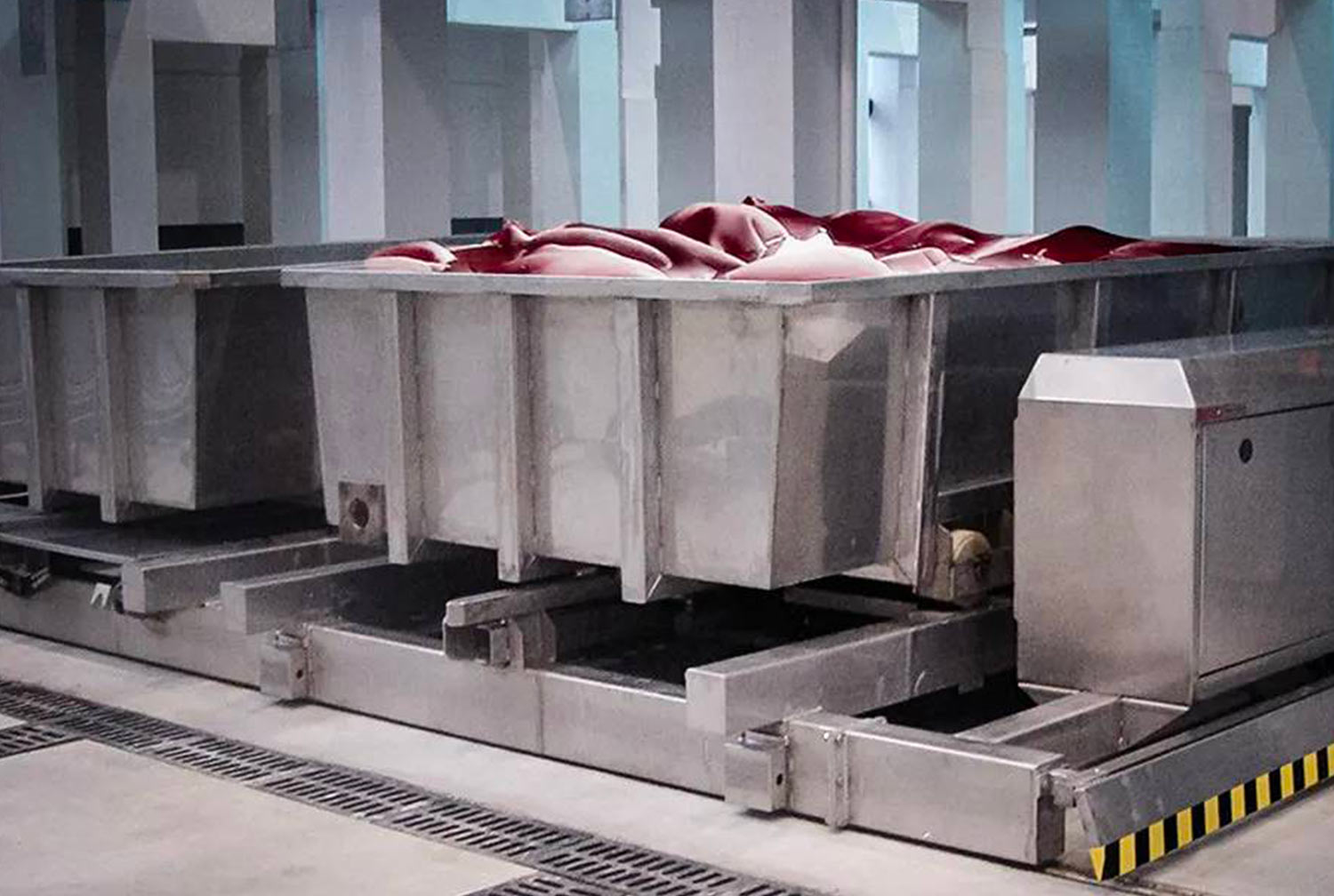
CARAVEL
automatic shuttle drums unloading
The CARAVEL by Feltre allows you to collect any type of leather, into special tanks, and transport them in the various stages of the tanning process. Really appreciated the application of unloading of the dyeing drums and the automatic connection with the setting-out machines, but also from the lime / soaking drums to bring and move the hides to the fleshing machine, or from the tanning drums to bring and transport the hides to the sammying machine.
The Caravel manages the complete movement of the bins inside the department, from the transport of the tanks full of hides to the repositioning of the empty tanks under the drum.
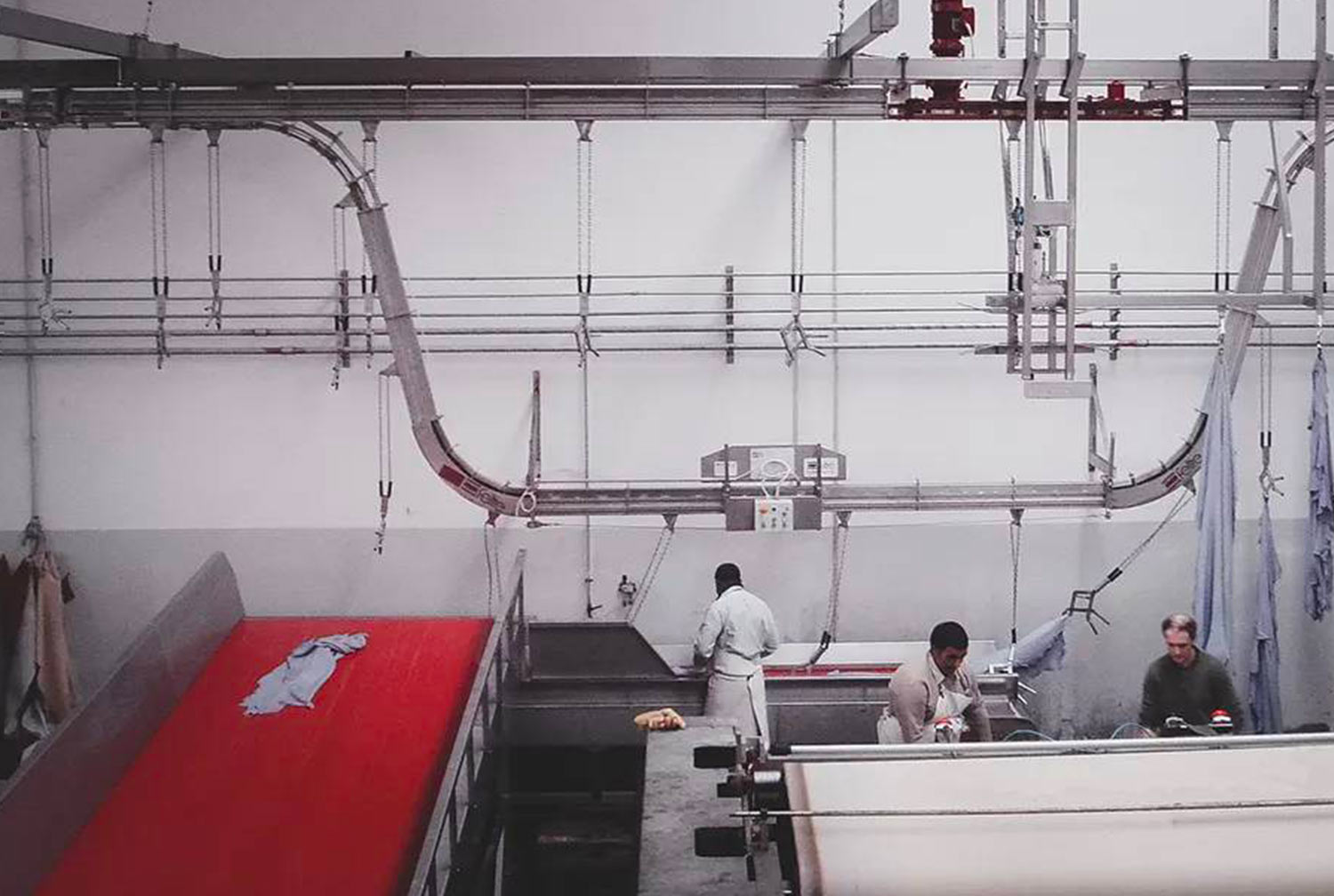
TORNADO
chain conveyors
The TORNADO® by Feltre is designed to solve the feeding problems of many primary machines (fleshing machine, splitting machine, sammying, setting-out machine and others), significantly increasing productivity, the quality of the process, ergonomics, and operator safety. In addition, the particular design of the clamps allows a secure grip of the hides without holes or damage. The constant feeding of the primary machines and the elimination of dead times between hide and hide allows a stable performance with high productivity performances compared to traditional or manual support systems.
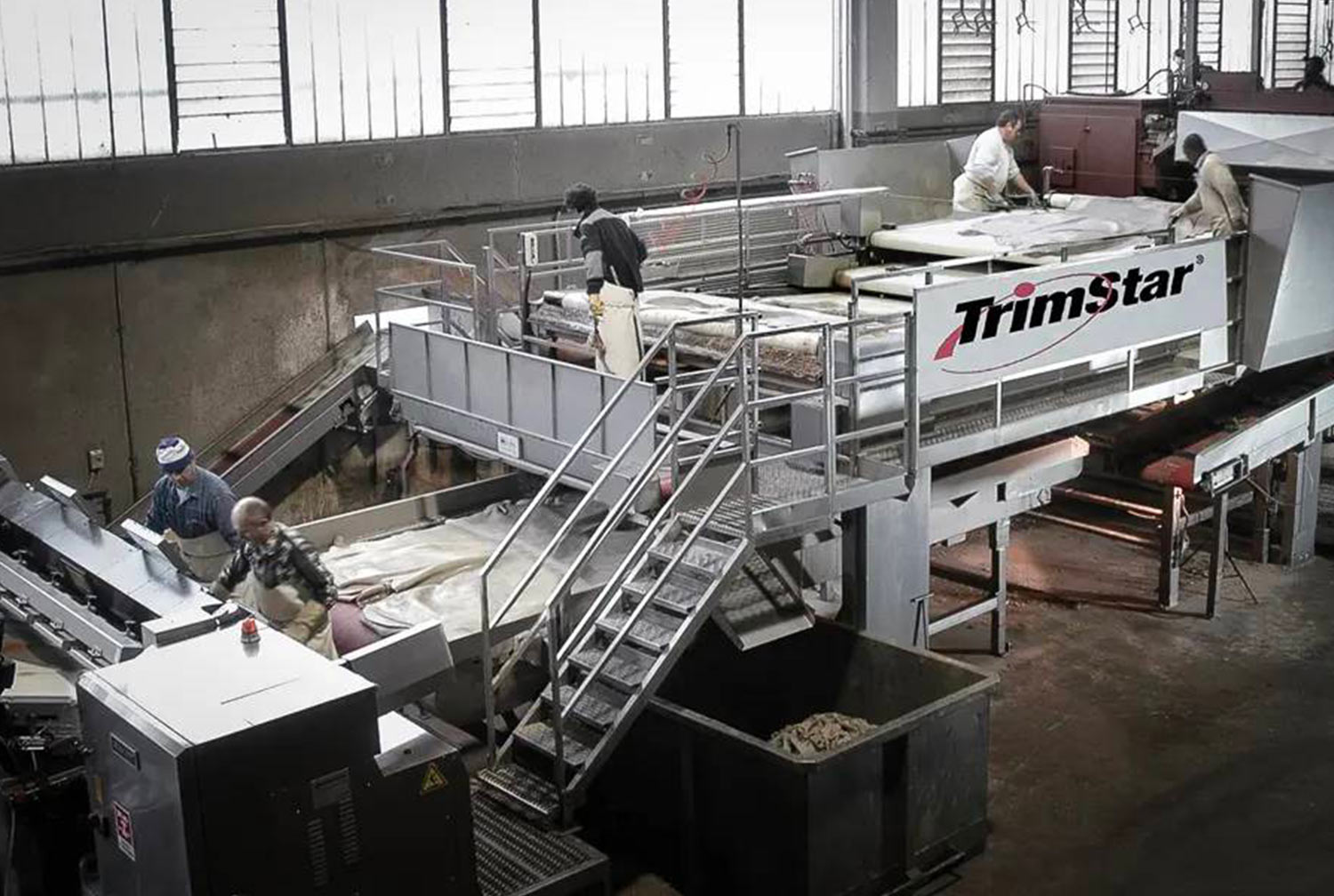
TRIMSTAR
lime splitting automation line
Feltre designs and manufactures single conveyor belts or whole automation for “just in time” trimming and the automatic connection between fleshing and splitting machine. These systems are tailor made according to the customer’s specific needs and arrangement of existing machines.
Feltre devices or automations are also used for the new generation of splitting m/c with automatic feeding, to prepare the hides for a better introduction.
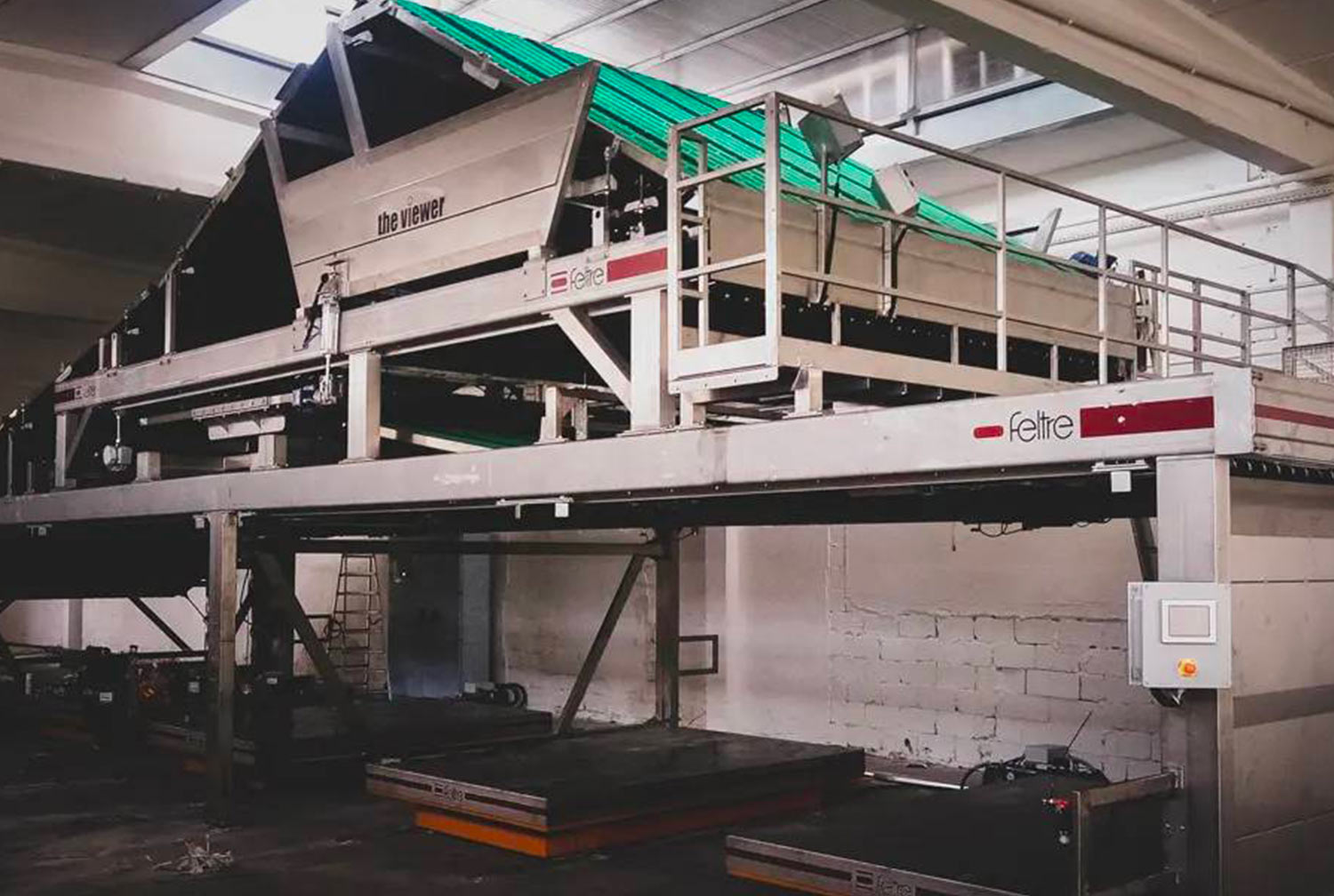
THE VIEWER
sorting line
The frontal selection device THE VIEWER® invented by Feltre in 1997, is the best solution that allows the inspection of the hides from an optimal position, thanks to its ergonomic design. The leather, coming out from the primary machine, is transported on the selection conveyor placed in front of the operator, where it can check it in its entirety. In addition, the proximity to the hides allows the operator to touch it, examining point by point and to make the selection in the best way.
THE VIEWER® then allows you to stack hides in different stations, based on the selection made, up to 22 choices, collecting data for each station to be transmitted to the plant’s IT system. The line provides also the application of packaging systems, weighing and automatic unloading of pallets.
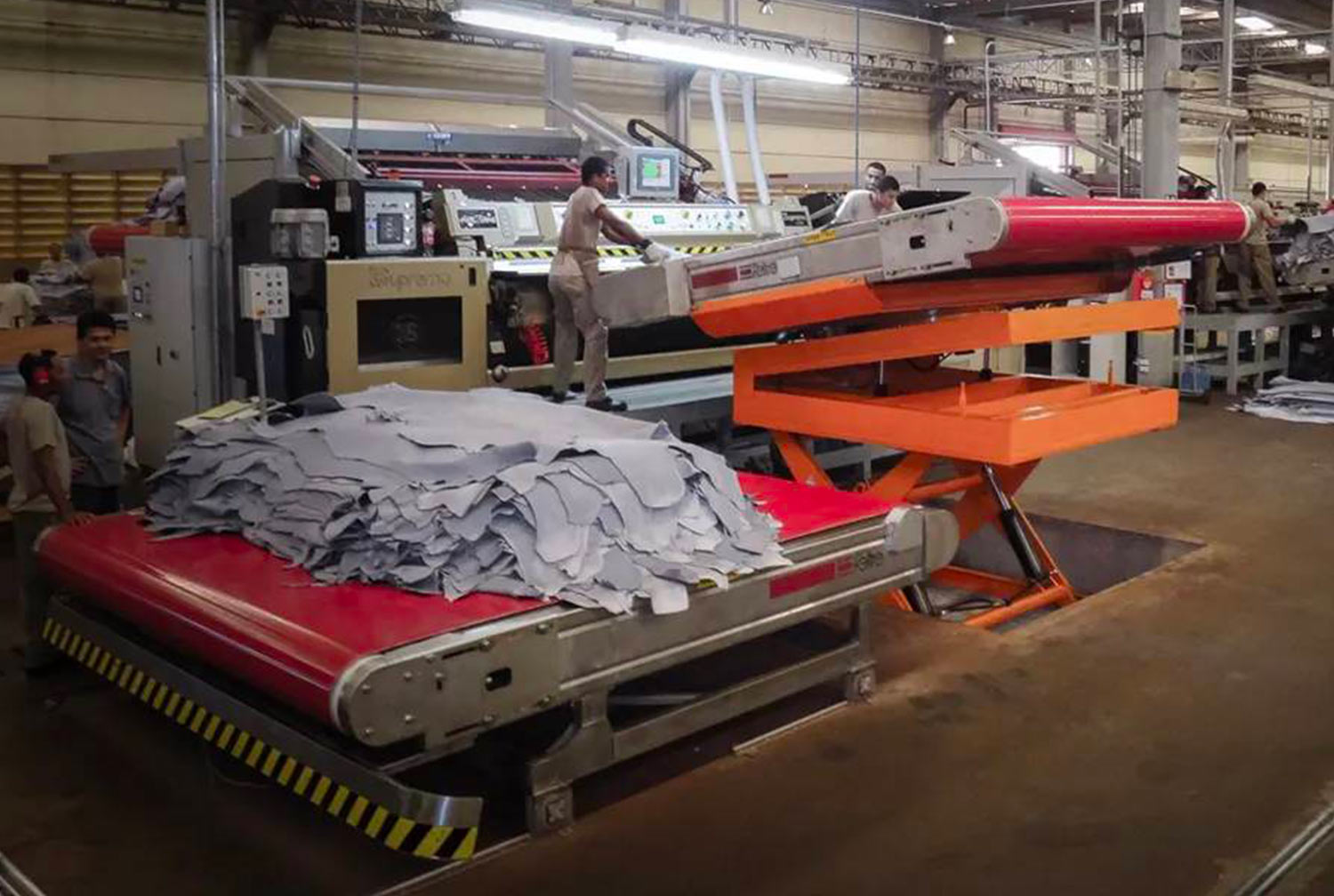
TRANSFER
automatic transfer system
The hides transfer system TRANSFER® allows the complete management and handling of the leather piles inside the tannery, avoiding the use of forklifts and significantly reducing the number of operators involved.
The piles of hides leaving any processing are moved AUTOMATICALLY until the next processing or stored in the relative warehouse, by means of automated trolleys in total safety and precision of movements.
The transport can be both linear and vertical, this allows multiple applications: from the storage of the hides on overlapping planes, to the transfer between machines arranged on various levels of height.
The TRANSFER® plant is designed and built in areas specially designed to optimize productivity, take full advantage of spaces and preserve the hides from agents that can alter its quality.
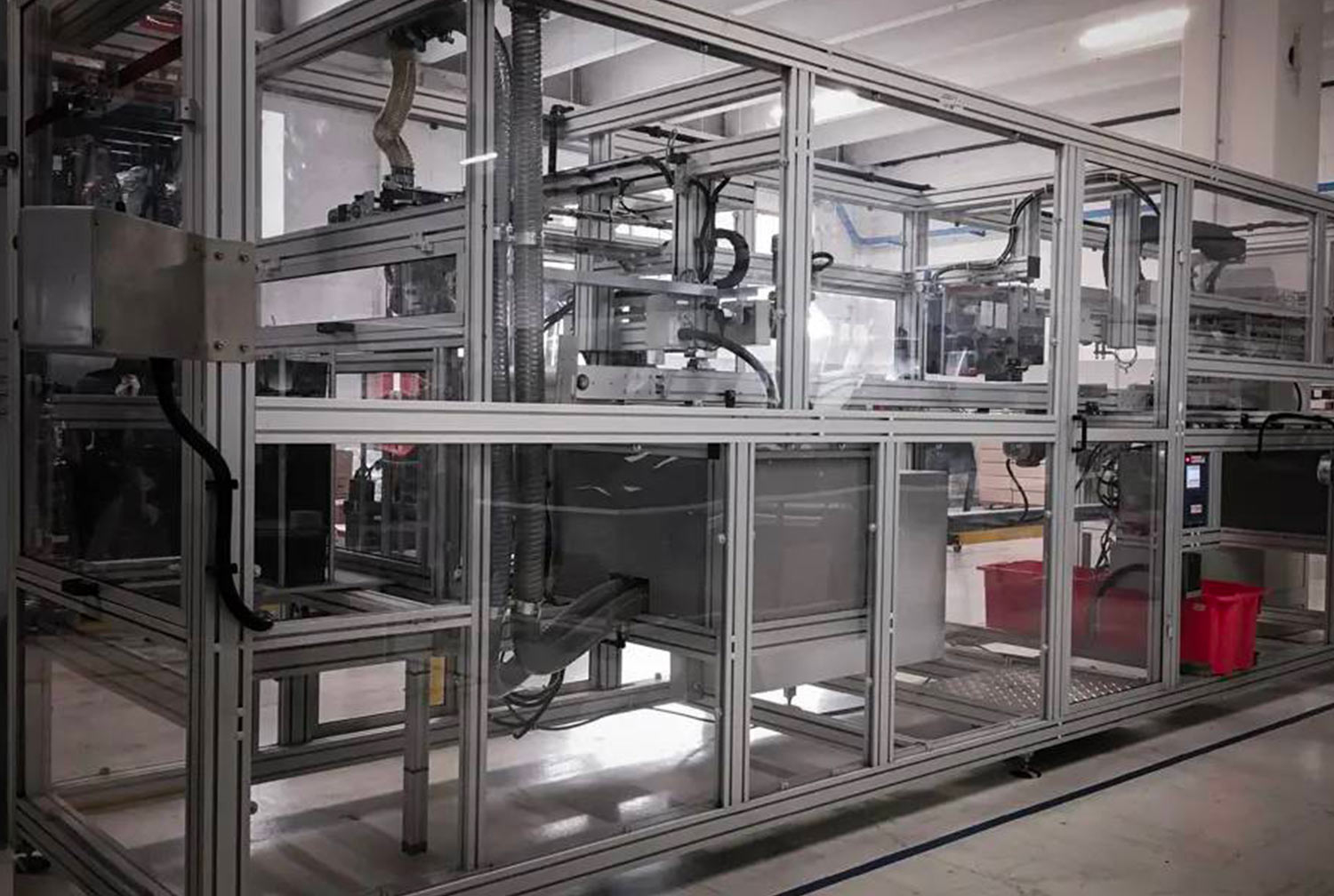
LEATHER TEST
clustering machine
The clustering machine is aimed at the classification of leather pieces prior to the assembly.
It has been conceived to carry out several analysis on the cut pieces based on their physical properties and appearance and then proceed to the sorting in accordance with the parameters suitably entered in the system.
The line consists of:
- automatic feeding and loading unit
- test stations (thickness, elongation)
- automatic stamping unit
- grading and piling unit on selected stations (5 grades + rejects)
- thoroughly managed by PLC with touch screen interface
- bar code reader connected to an industrial PC for data collection and data transfer
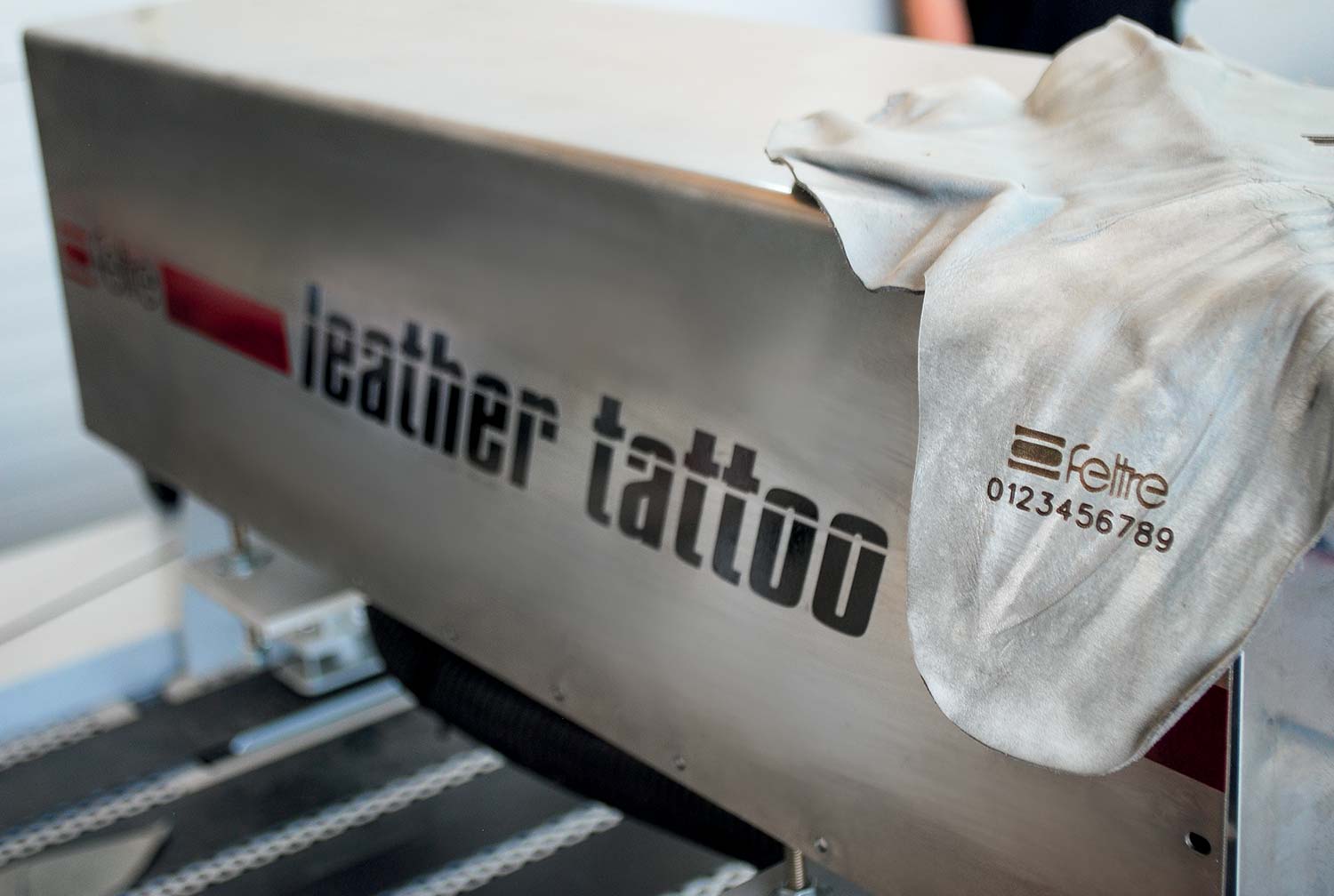
LEATHER TATTOO
LASER MARKING FOR THE TANNING INDUSTRY
Feltre’s Leather tattoo, is the only laser marker designed for the notoriously difficult and aggressive tanning environment. The technology has been declined into 2 models specifically for marking raw hides or wet blue/wet white.
The device is integrated into the process so that each leather is uniquely identified without slowing down the production line. The software included with the Leather Tattoo allows you to control the speed and depth of marking.
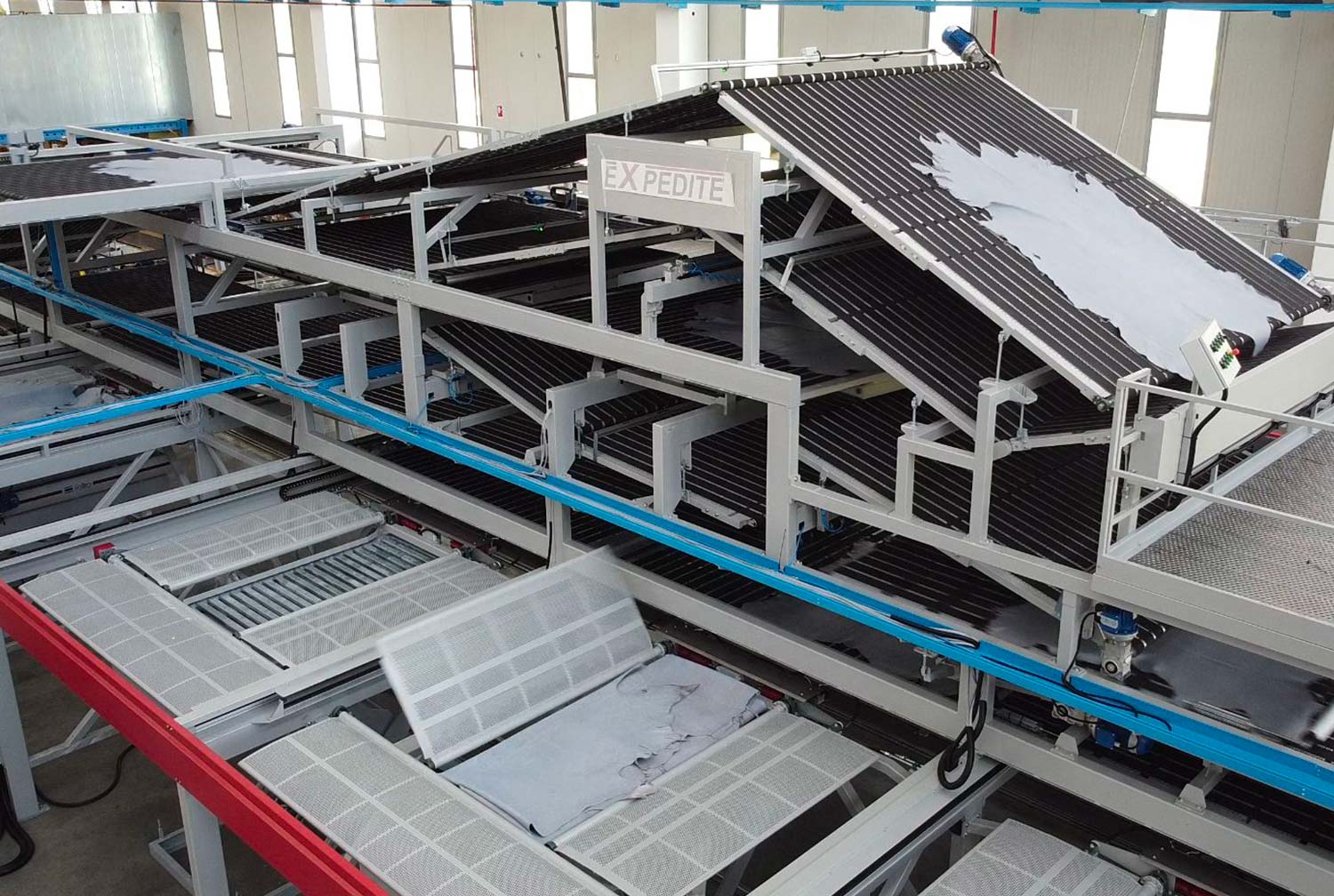
EXPEDITE
W.B. LEATHER FOLDING SYSTEM FOR PALLET SHIPMENT
The EXPEDITE hide folding system allows whole or half leather to be folded and stacked with the option of dividing them into different sorting stations.
The leather are folded according to the size of the pallet and then deposited in alternating positions to allow the formation of a uniform, well-balanced stack.

